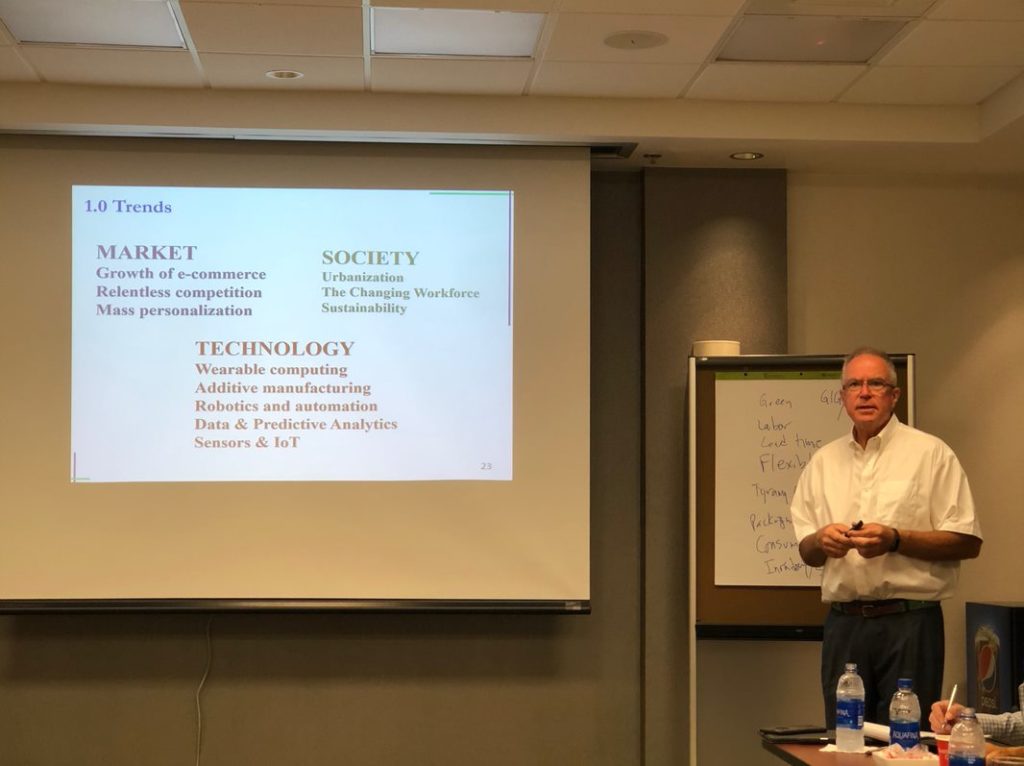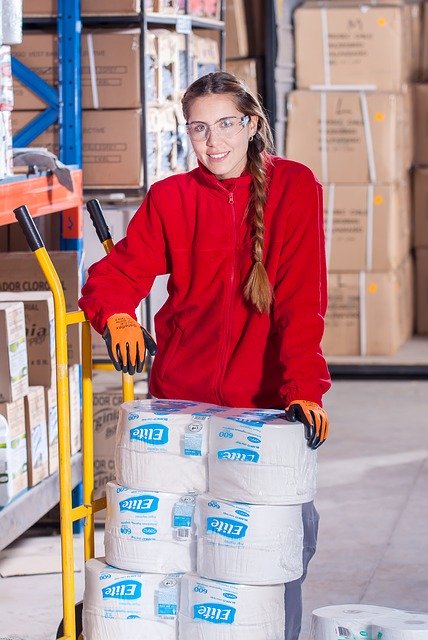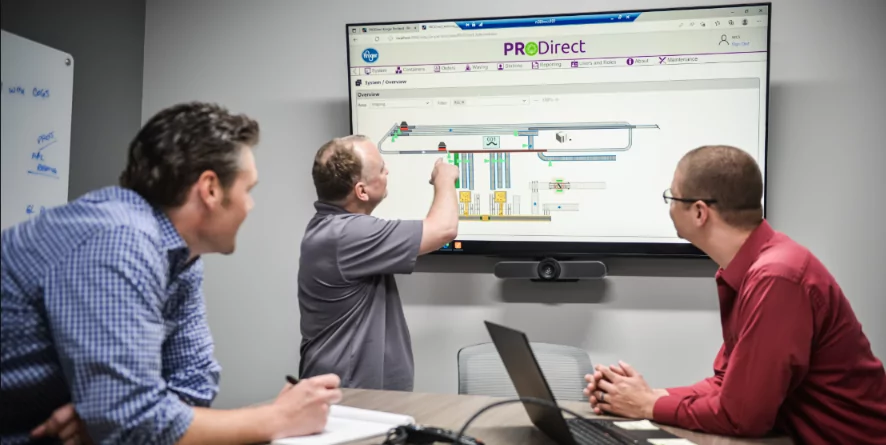Imagine yourself out of town to meet your most important client. After a long day of traveling and delays, you arrive at the hotel to prepare for your meeting the next morning. Your heart sinks as you realize you’ve forgotten to pack your dress shirt. The mall is closed and you’re in an unfamiliar town, but you don’t panic. You simply pick up your smartphone, input your measurements, and the next morning a custom dress shirt is delivered to your hotel room.
If this doesn’t seem far-fetched, your expectations are quite appropriate. In our on-demand world of Netflix streaming, Uber, DoorDash & Amazon Prime delivery, we have come to expect our needs to be met immediately. After all, our current economy is full of disruptors, with the only constant being constant change.

Last fall, our team hosted a renowned expert in supply chain & logistics, Dr. Bill Ferrell, Fluor Professor of Industrial Engineering at Clemson University. Bill led a forum with a handful of automated distribution executives in the retail and food & beverage industries. We had a fascinating discussion about where we might be going in the industry and why. We wanted to share with you some of the most important take-aways from our forum. This is the first of three blogs in a series. The next blog will cover future trends, and final entry will cover overcoming challenges.
Consumer Expectations
The illustration of the custom shirt delivered to a hotel room is an example of how our consumer expectations have evolved. In the mid 1800’s, custom tailored shirts were replaced with mass-produced shirts sold in department stores with standardized sizes. In the years since, we have moved to a model of garments produced quickly and cheaply overseas and sold in stores and online.

Since then, changing customer expectations are to desire mass personalization, reliance on technology/eCommerce and more variety in their options. Technology and automation have created these expectations and will be needed to help companies meet demand.
The biggest expectation for consumers, in any industry, is that it all needs to be NOW!
Technology
Following the thread of consumer expectation that product gets into their hands quickly, smaller footprints for facilities are being used due increased urbanization. DC’s are being implemented to maximize floor space, storage, and speed.
Society / Demographics of Labor
Societal factors such as population trends and demographics help us to understand where we are now and where we need to be to evolve. We know, for example, that the numbers of new workers will not keep up with exodus of aging workers available and willing to work in a distribution center with a set number of hours, even though in 2015 Millennials surpassed Gen X as the largest workforce segment.

Today’s employees need different and improved skills in the DC, and preferences on working hours. The “gig economy” is a real issue for employers, who need employees for specific shifts. Meanwhile employees prefer flexibility, working when needed, and having control of their schedules. Finding a happy medium between these desires will be key.
Emerging….
High speed, High value – For Added Value
Several “emerging” trends discussed include total supply chain visibility and the IoT (Internet of Things) to provide centralized control over a large segment of the supply chain. Planning & Optimization allows for anticipatory logistics, perhaps even shipping long prior to the previous supply being fully run out to cut down on inventory and storage costs.
Low cost, Low impact – For Efficiency
There are several companies currently sharing DC’s and collaborating on freight transportation to share, and therefore cut costs. Another low cost, low impact trend emerging is autonomous delivery in the form of driverless cars, drones, or other connected vehicles with dynamic routing capabilities.
Your Thoughts?
Do you want to discuss how to get your business ready for the future? Our team helps companies implement automation in their fulfillment systems to more quickly and accurately move product. Contact us to start the conversation!




